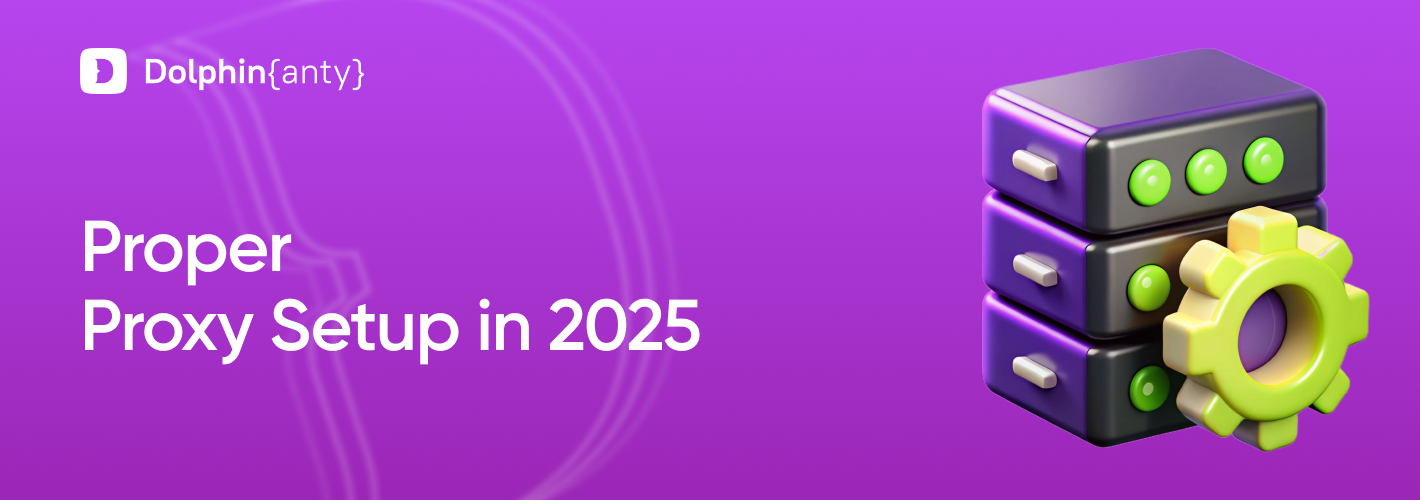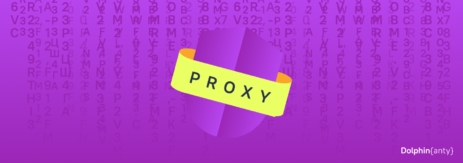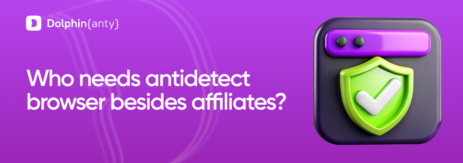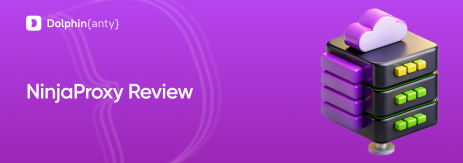Why Your Proxies Don’t Work Anymore
Blog » Why Your Proxies Don’t Work Anymore
The Main Mistakes of 2025
It used to be simple: grab a proxy, launch 🚀 Dolphin Anty, and you were ready to go. But in 2025, platforms’ antifraud systems have gotten 🤓 smarter as they track more signals, compare user behavior and spot inconsistencies faster than ever. That means your browser fingerprint setup and proxy choice now need to be handled with extra care if you want your accounts and campaigns to run smoothly.
For digital hustlers, affiliate marketers, account farmers, and automation pros, this shift has had a real impact, forcing many to rethink their approach. Datacenter proxies, once the budget weapon of choice, are now being flagged en masse — sometimes before you even complete a signup form.
The good news? There’s a way to adapt and win. In this article, you’ll learn:
- Why datacenter proxies are failing in 2025 (and it’s not just “bad luck”)
- How ISP residential proxies from NodeMaven bypass these new detection systems
- A step-by-step setup guide to get them running in Dolphin Anty in under 2 minutes
If you’re serious about keeping your accounts alive, avoiding endless captchas and running campaigns without fear of the ban hammer, this is the 2025 proxy playbook you need.
The Death of Datacenter Proxies in 2025 💀
Once the backbone of budget-friendly multi-accounting, datacenter proxies are now an easy target for platforms. Here’s why:
IP-to-ISP Mismatch
Social media and e-commerce platforms now run real-time IP validation against ISP databases. Datacenter IPs come from cloud providers like AWS, OVH and DigitalOcean, not from consumer ISPs, so they stick out immediately.
Shared Subnet Contamination
Because datacenter proxies are cheap, thousands of users often share the same subnets. If one IP in a range gets flagged, the entire range is at risk. This creates a “domino ban effect” where accounts you haven’t even touched yet get blocked.
TLS & HTTP Signature Fingerprinting
New detection algorithms look at your browser’s connection fingerprints, TLS versions, cipher suites and HTTP header order. Datacenter proxies often use uniform server configurations that don’t match real consumer devices.
AI Behavioral Tracking
Platforms now track browsing behavior over time, mapping login velocity, scroll patterns, and click timing. If the data points don’t match what a real human from that IP’s region would do, your account gets flagged.
Bottom line: Datacenter proxies aren’t “bad” because they’re slow or unstable, they’re bad because they’re too easy for modern anti-fraud AI to detect.
Why NodeMaven ISP Proxies Are the Fix 🛠
NodeMaven’s ISP (static residential) proxies are IPs issued by real ISPs, hosted on genuine consumer infrastructure, giving them the trust score of a home connection with the stability of a server.
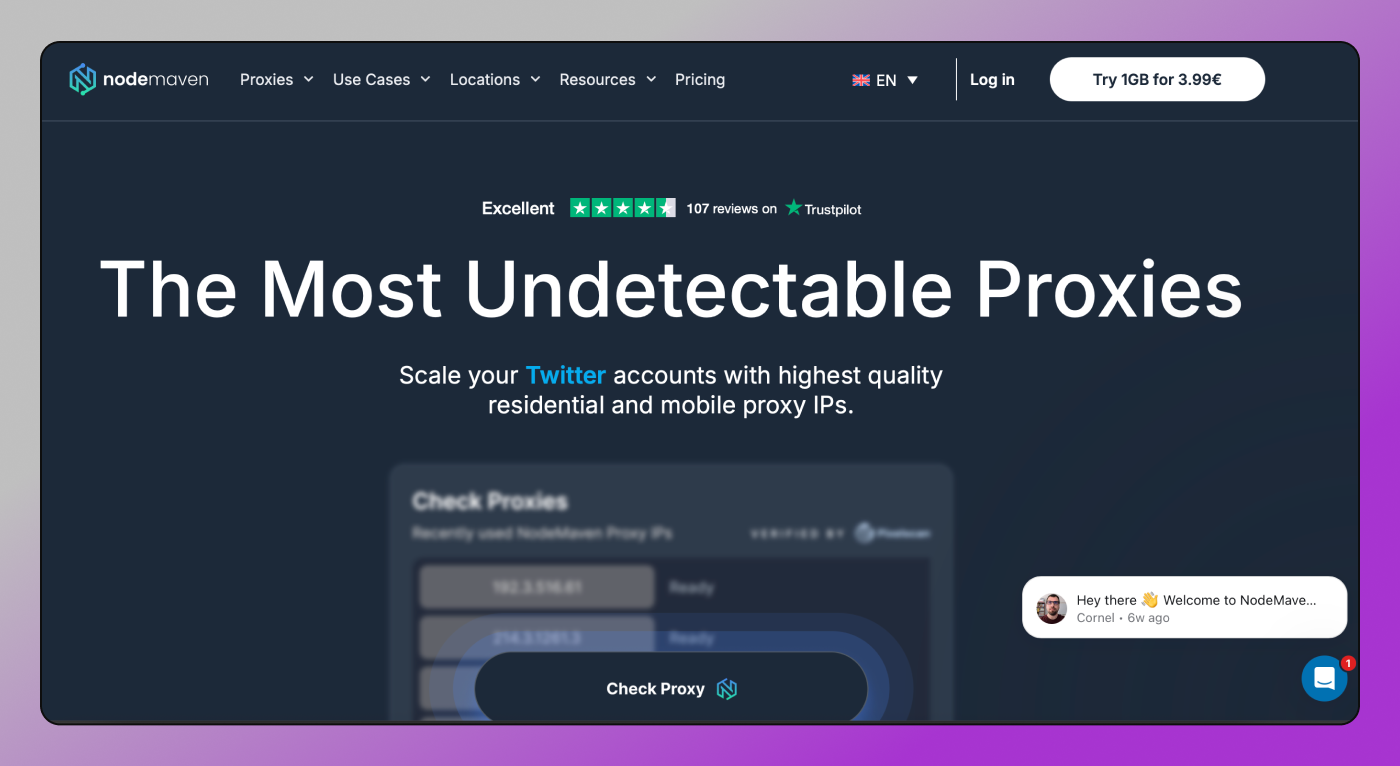
Key benefits over datacenter proxies:
- Industry-validated quality via tools like PixelScan and ProxyWay.
- Long sticky sessions (up to 24h) for consistent logins, farming, and checkout flows.
- City & ISP targeting to appear exactly where your business needs.
- Low ban rate due to proprietary IP quality filtering.
- One pool, two powers: access to both mobile and residential IPs for the same price.
Example use cases:
- Running 5+ Facebook ad accounts without triggering review loops.
- Farming LinkedIn outreach profiles without velocity bans.
- Managing OnlyFans model socials on TikTok/Instagram without account verifications popping up daily.
Common Mistakes Digital Hustlers Make With Proxies ❌
Even with good proxies, you can still get flagged if you make these mistakes:
- Using the Same IP for Multiple Accounts: Each account should have its own dedicated IP. Sharing kills trust.
- Not Matching GEO to Target Market: If you’re targeting US customers but your IP is in Brazil, expect instant suspicion.
- Rotating Too Often: For account work, frequent IP changes break trust. Use sticky sessions for consistency.
- Ignoring Browser Fingerprinting: Proxies hide your IP, but your browser fingerprint still reveals you. Use Dolphin Anty’s fingerprinting features alongside NodeMaven proxies for full protection.
How to Add NodeMaven Proxies to Dolphin Anty in Two Minutes ⚙️
NodeMaven has a ready-to-use integration page for 🔥 Dolphin Anty, but here’s the short version so you can get started right now:
- Log in to your Dolphin Anty dashboard.
- Go to Profiles → Create New Profile.
- Scroll to the Proxy section and select the type: HTTP or SOCKS5.
- Enter your NodeMaven proxy details in this format:
http://username:password@ip:port - Click Check Proxy: you should see your chosen GEO and ISP appear in the test result.
- Save & launch your profile.
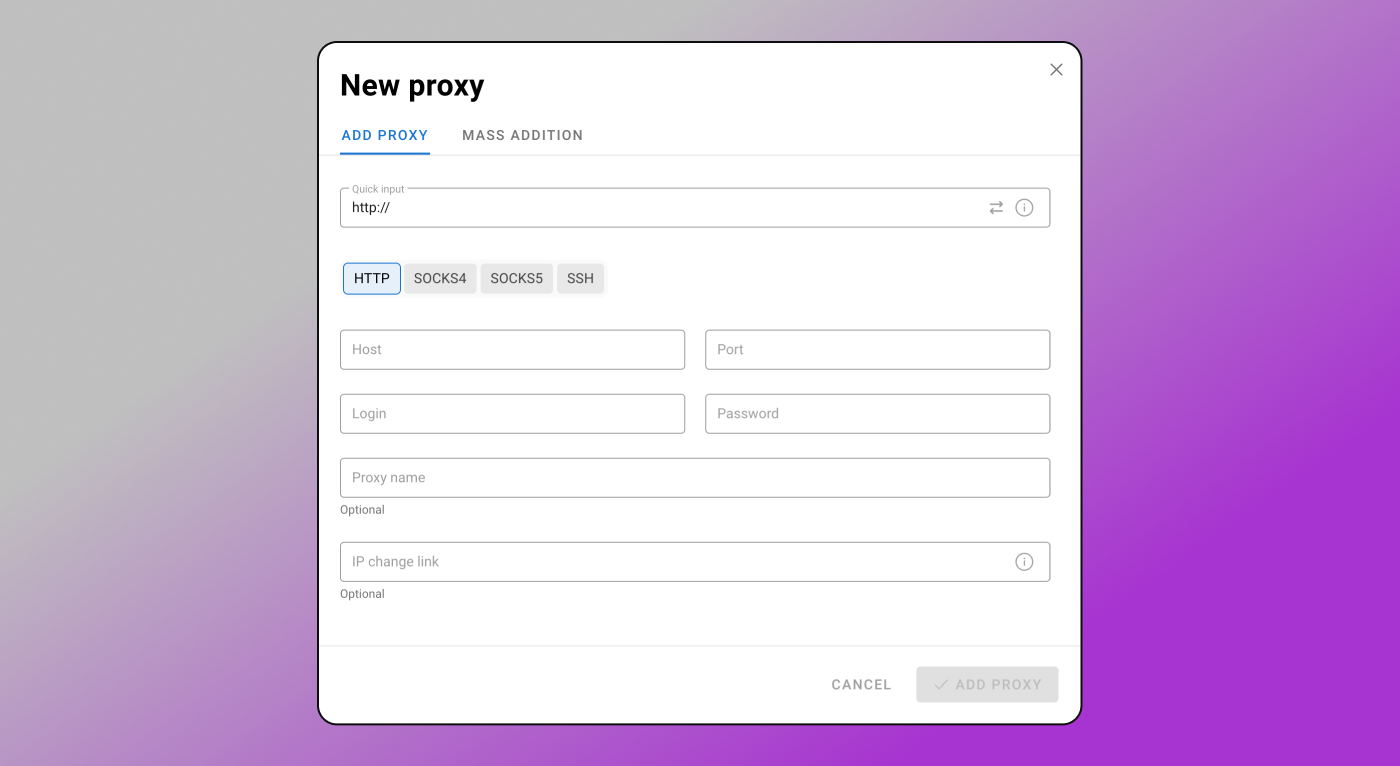
Pro tip: If you’re running multiple accounts, enable sticky sessions in your NodeMaven dashboard so each account keeps the same IP during its entire activity window. This drastically reduces verification prompts.
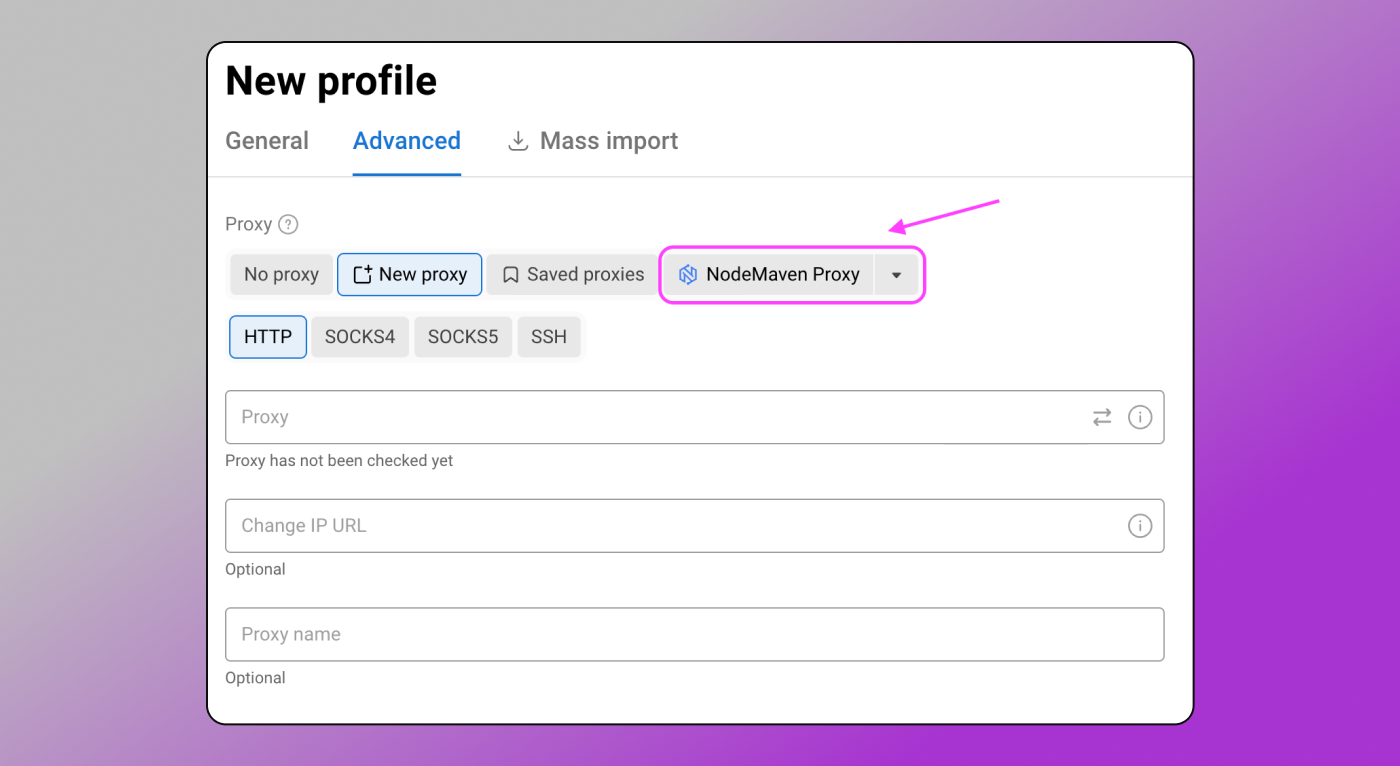
And if you prefer everything in one place, Dolphin Anty has a built-in proxy marketplace where you can purchase ✅ NodeMaven proxies directly inside the app and instantly assign them to your profiles. And if you are a new user, you’ll get free traffic to test their capabilities.
How Else Dolphin Anty Protects Your Anonimity 🥷
Dolphin Anty, on its side, also regularly upgrades its functionality to make digital fingerprints as realistic as possible. For example, there are features to boost WebRTC control and keep your real IP fully protected.
The first is the new “No UDP” mode, which completely blocks UDP traffic in WebRTC at the profile level. This is a big win if you need maximum protection from WebRTC leaks, work with proxies that don’t support UDP, or want to prevent any chance of your real IP slipping through anti-fraud checks. You can enable it right in your profile settings and even during bulk profile imports.
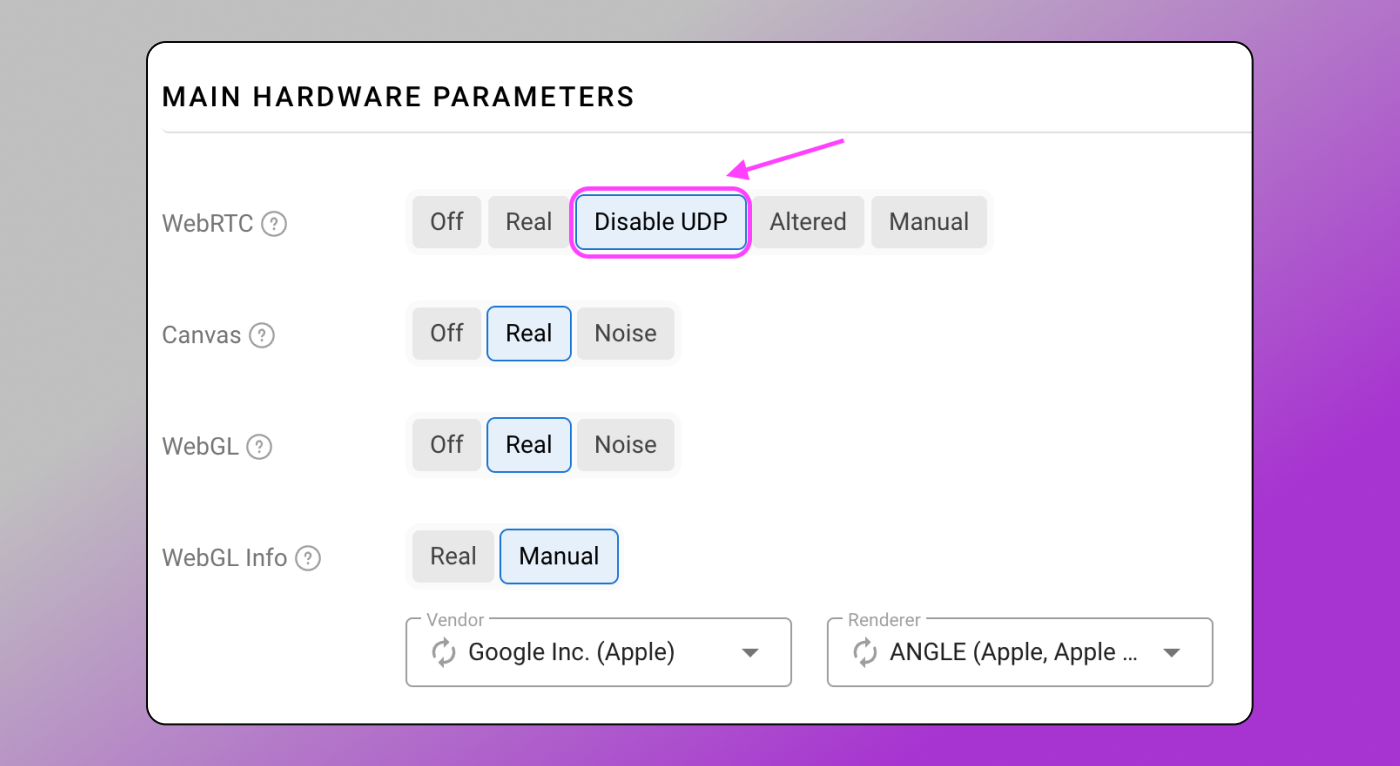
The second upgrade is full-spectrum IP spoofing in WebRTC. Thanks to it, IP spoofing kicks in at the WebRTC-candidate creation stage for both UDP and TCP. The result is that the websites only see your spoofed IP, while your real one remains technically unreachable. And all this happens without breaking WebRTC functionality.
Best Practices to Future-Proof Your Proxy Setup 📔
In 2025, winning the proxy game isn’t just about choosing the right IP type, it’s about building a setup that stays ahead of detection updates for the long haul.
Social platforms are in a constant 🏹 arms race against multi-accounting, automation, and geo-bypassing. That means what works today might get flagged tomorrow unless you plan for resilience.
These best practices will help you future-proof your proxy strategy, protect your accounts, and keep your campaigns running without having to rebuild from scratch every few months.
- Diversify Your IP Pool: Mix residential and mobile IPs for campaigns. Mobile IPs have the highest trust scores in 2025.
- Match IP, Browser, and Time Zone: Make your digital footprint look 100% natural. NodeMaven’s city-level targeting + Dolphin’s profile settings make this easy.
- Monitor IP Reputation Regularly: Tools like PixelScan or IPQualityScore can help detect if your IP pool is starting to get flagged before bans happen.
- Integrate With Anti-Detect Browsers: Dolphin Anty is perfect for this, pairing it with NodeMaven’s IPs makes your setup nearly undetectable.
Final Word
If your proxies suddenly stopped working this year, it’s not random, it’s the platforms getting smarter. Datacenter proxies simply can’t keep up with AI-driven detection.
The fix is to blend in completely, and that means using real ISP-issued IPs with the stability and trust score of a home connection. 🔗 NodeMaven’s ISP residential proxies, paired with 📣 Dolphin Anty’s advanced anti-detection features, let you operate like a genuine user, at scale, without constant bans or interruptions.
In 2025, stealth isn’t optional, it’s the cost of entry.
